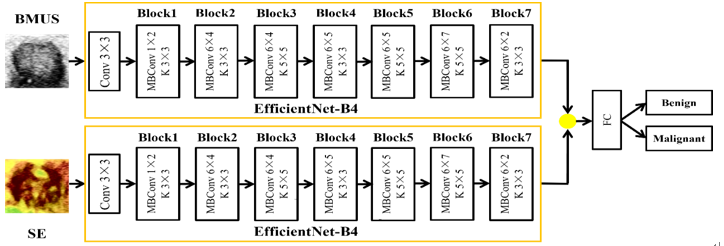
Recently, a research group led by Prof. LI Hai from the Hefei Institutes of Physical Science (HFIPS), Chinese Academy of Sciences (CAS), developed a multimodal deep-learning model for predicting the malignancy of TI-RADS 4 high-risk characteristics thyroid nodules.
The research results were published in Computerized Medical Imaging and Graphics.
Thyroid cancer is one of the most common malignancies, with its incidence rising rapidly, particularly in China. Ultrasound plays a crucial role in assessing thyroid nodules, but the accuracy of diagnosis largely depends on the doctor's experience, leading to potential misdiagnosis—especially with TI-RADS 4 nodules. Over-diagnosis can lead to unnecessary procedures, while missed diagnoses may delay life-saving treatments. As such, improving diagnostic accuracy is vital.
To address this challenge, a team of researchers has developed a deep learning-based AI model that combines B-mode ultrasound and strain elastography to predict the malignancy of TI-RADS 4 nodules. The model demonstrated impressive results, achieving AUCs of 0.937 in the test set and 0.927 in external validation, outperforming traditional single-modality models. Furthermore, the AI model outperformed radiologists in diagnostic performance. When used as an aid, the model improved the diagnostic accuracy of all radiologists, regardless of experience. The heatmaps generated by the model aligned closely with the areas of focus for radiologists, further confirming its clinical utility and accuracy.
"This innovative AI model can significantly reduce the risk of misdiagnosis and missed diagnoses, particularly for high-risk thyroid cancer patients," said Prof. LI Hai.

Flow chart of thyroid multimodal image feature fusion model (Image by WANG Tengfei)